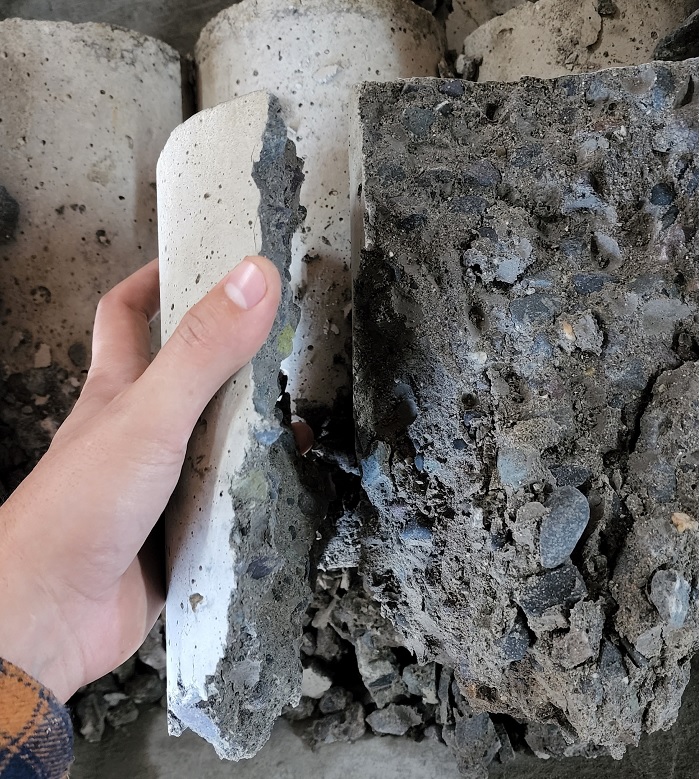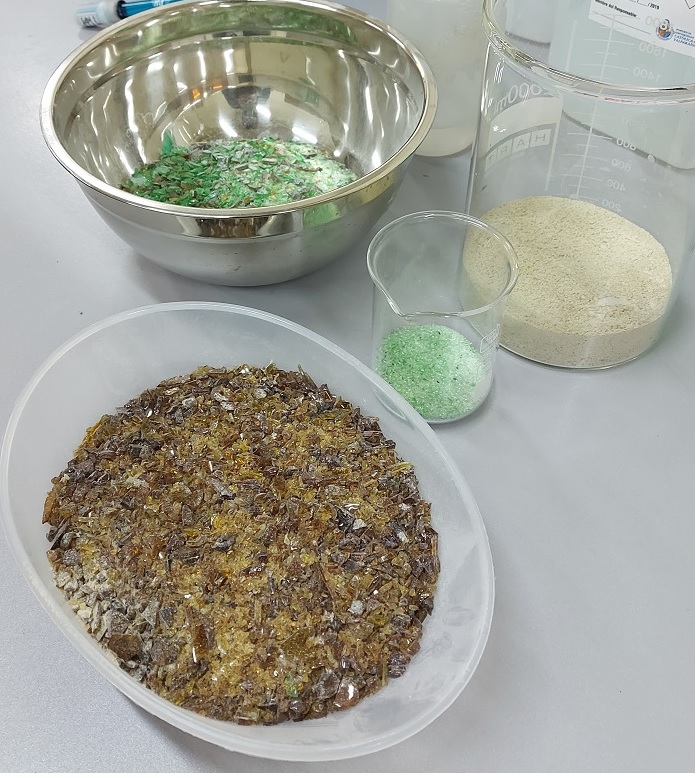“We have been working since late 2020 to reduce the amount of cement used in concrete, and thus, cut down on CO2 emissions,” explains Victor Fabian Armijos, head of the Innovation Department at Sacyr Chile.
"After a series of technological processes, we managed to transform re-purposed glass into a new building material, which allows to replace between 10% and 20% of the required amount of cement in concrete,” explains engineer Sebastián Quiroz Durán, CEO of E-M, a start up that Sacyr collaborates with to develop this new material and large-scale project.
The latest results obtained in the laboratory agree with our research and show that, on average, glass enhances the mechanical strength of concrete after 28 days of curation up to 13.4%, and therefore also its durability. Thanks to glass having a fireproof, inert and pozzolanic nature and an amorphous atomic distribution, various areas of industrial applications have been opened, such as urban furniture, 3D printing and radiation protection in nuclear plants.
Thus, this new concrete would have a less cement in its composition, water, aggregates and glass (in powder form). Currently the glass powder (tentatively called WG-X), is prepared through various selection, control, crushing and measurement processes.
"Cement itself and its production are very polluting activities within the construction industry and globally it represents 8% of the total CO2 released to the environment, so any decrease or replacement will be very significant when it comes to reducing the carbon footprint," explains Victor Armijos. It is also worth noting that for every m3 of concrete, about 100 750cc glass bottles are recycled.

Additionally, he adds that this project involves sharing this knowledge, since there are already other experiences in other countries, such as the bridge made with 70,000 glass bottles on Nuns' island, in Montreal, Canada.
For this reason, reports are made to demonstrate the technical and economic advantages of adding recycled glass powder into the formulation of concrete elements.
"Sacyr Chile has already obtained favorable results at the laboratory level, and now we want to replicate results on a larger scale”" explains the head of Innovation in Chile.
“The next stage will be to validate a non-structural concrete element on site, which will include about 5 to 8 m3 of concrete with this recycled material, in order to evaluate its behavior under normal conditions of exposure on the ground" explains Victor.
Since this project is part of the portfolio of strategic projects for the 2025 Sustainability Action Plan, Sacyr Chile will continue to collaborate with other strategic partners such as the academic sector, scaling up this type of projects with the Universidad de La Frontera, in Temuco, through additional studies of recycled aggregates as alternative construction materials for granular layers and concrete.

Recovery of Construction Waste in Chile
The construction sector in Chile is responsible for 34% of the creation of solid waste and at least 33% of GHG emissions.
There is little recovery of waste at multiple scales in Chile compared to the rest of the countries in the OECD. Only in non-hazardous municipal waste, it was reported to SINADER that 98.5% of its waste is eliminated and only 1.5% recovered. According to the scientific journal Resources, Conservation & Recycling, Chilean municipalities recycle 1.7% of domestic waste, the rest ends up in streets and landfills.
Mixed Construction and Demolition Waste represents the most impactful waste by volume, with approximately 74,000 m3 (for a 3-year period).
